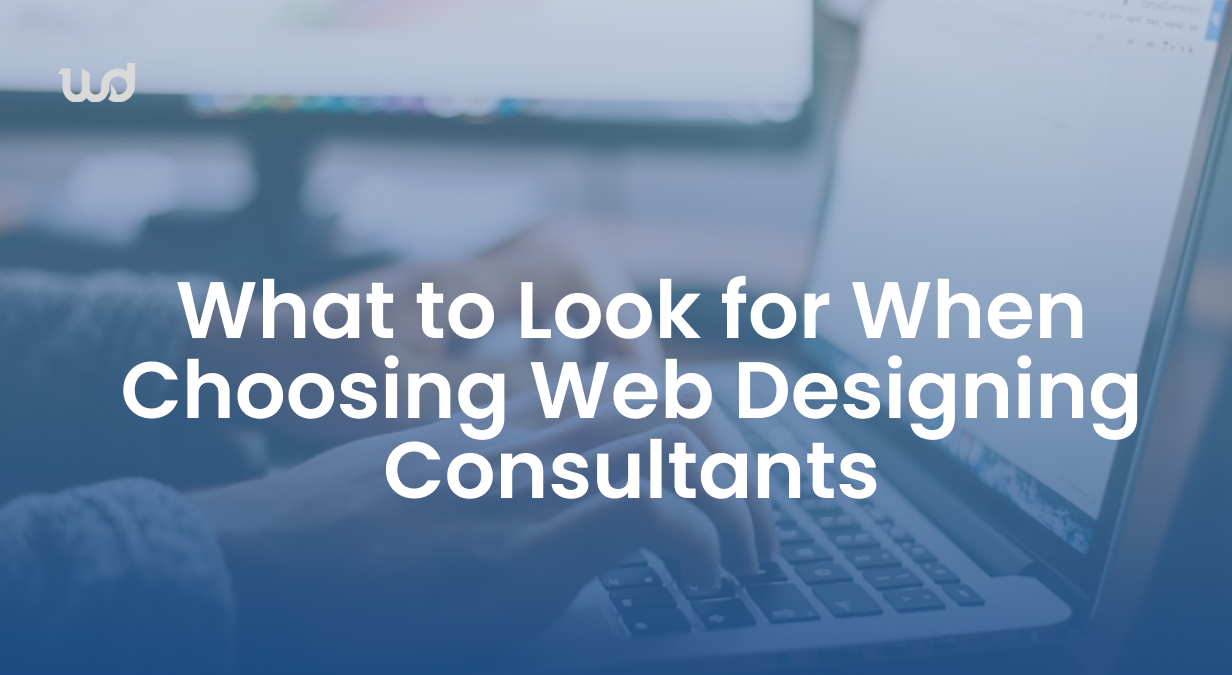Best Strategies for Small Business Website Design and User Experience

In today’s digital age, a strong online presence is crucial for small businesses. A well-designed website not only attracts potential customers but also plays a crucial role in converting visitors into loyal clients. Website Digitals specializes in providing top-notch web development services to help small businesses achieve just that. This article explores the best strategies for small business website design and user experience, ensuring your website is both engaging and effective.
1. Embrace a Mobile-First Design Approach
Expert Insight: Worthy to note is that over 50 percent of all internet usage is through mobile devices; therefore, one of the most critical small business website design tips is adopting a mobile-first approach. Design for mobile first, then adapt for desktop, so users have a smooth experience on your website.
Why It Matters: Google’s mobile-friendly update dictates that the mobile version of your site is considered the primary version. Not having a mobile-optimized site can negatively affect your site’s ranking and the visiting users’ experience.
Actionable Tips:
- Responsive Design for Small Business Websites: Design the layout to be differently adaptive in different screen sizes for it to fit every screen type. You can solve these issues using tools like Bootstrap.
- Fast Loading Speed: Mobile users expect fast page load times. Use tools like Google PageSpeed Insights to improve your site’s performance.
- Simplify Navigation: Since mobile screens have limited space, simplify navigation with clear labels and focus on the key links.
2. Keep Your Design Clean and Simple
Expert Insight: A well-organized, clutter-free website is a key element of user-friendly website design for small businesses. Use a simplified design that highlights the information customers need to see.
Why It Matters: Business websites, small ones, should be organized and clutter-free. This helps users find information quickly and stay on the site longer, reducing bounce rates.
Actionable Tips:
- White Space: Using white space is important for creating contrast, improving readability, and giving your website a professional look.
- Consistent Branding: Make sure that all the other elements like the color scheme, the type of fonts used, and the logos used in the site are uniform. This makes customers recognize and trust the brand, hence, having a repeat of sales on the products.
- Readable Fonts: Select the typeface that is readable on different devices, especially the one that is readable on desktop computers. To create good readability, the minimum size of the text should be 16px.
3. Prioritize Speed Optimization
Expert Insight: Speed optimization is one of the best practices for small business web design. A slow-loading website can frustrate visitors and lead to higher bounce rates. Every site user communicates with the site, and thus slow loading of a site may cause irritation and subsequently high bounce rates.
Why It Matters: Researches reveal that if a website is not loaded in 3 seconds, 40% of the users will leave the site.
Actionable Tips:
- Image Optimization: To resize images firstly you can go to sites like TinyPNG and ImageOptim or compress without losing the quality.
- Leverage Browser Caching: Implement browser caching policies to allow frequently visited contents; such as images or CSS to be stored in the user’s browser cache for faster loading on subsequent visits by the same user.
- Minimize HTTP Requests: Lower the number of objects on a page, for instance scripts, and stylesheets to eliminate HTTP requests as much as possible.
Expert Insight: Navigation is a system indicator that forms the basis of a website’s usability. This upright implies that users can easily locate what they are looking for, this is crucial for keeping visitors on your site and and the best of the strategies for small business website design and user experience
Why It Matters: Disorganized navigation will lead to a high bounce rate. User-centric navigation is a cornerstone of effective website design for small businesses, ensuring visitors can easily explore your site, find information, and take action.
Actionable Tips:
- Logical Structure: Develop a clear and well-thought-out structure of your site’s navigation menu so it would have clearly outlined sections and subsections.
- Breadcrumbs: Display the site structure by using the breadcrumb trail so that the user knows where they are on the site and how to get back.
- Sticky Navigation: Apply fixed navigation menus that follow the users throughout the page, allowing easy access to important links.
5. Use High-Quality Visual Content
Expert Insight: This is particularly especially true considering that the use of visual content which includes the use of images, videos, and infographics is very effective in capturing the attention of the users. Incorporating visuals thoughtfully is one of the best small business UX design strategies.
Why It Matters: It is fascinating to note that people understand visuals sixty thousand times better than, let alone, plain text. The application of appealing graphics is capable of improving the UX, contributing to memory, and thus increasing the chances of conversion. Introducing visual elements into the business structure in an appropriate manner is one of the best strategies for small business website design and user experience
Actionable Tips:
- Relevant Images: Choose images that will have a relation to the content of the article and or the target clientele. While click-stock images are handy, the audience often gets captivated by original production more.
- Optimize for SEO: It is advisable to optimize the images on the website by adding appropriate alt tags to the images and the file name for ease of recognition by the search engines The images should also be compressed for faster download by the internet users.
- Video Content: Use video content to define certain processes or procedures, to introduce and advertise certain products, or to provide testimonials for the company’s services. Make sure that all videos that are posted online are always optimized for speed and are also friendly with mobile devices.
6. Optimize for Search Engines
Expert Insight: It is important to note that SEO more commonly referred to as Search Engine Optimization is very important in increasing traffic to your website naturally. Search engine optimization implies that a website is made more visible to the search engine so that it attracts more traffic hence making more conversions and crafty strategies for small business website design and user experience.
Why It Matters: In this way SEO leads your webpage and makes it easier for potential customers to find your website from search engine results. The site optimized well is also a site that is likely to give a good user experience since SEO and UX are almost always intertwined.
Actionable Tips:
- Keyword Research: One may use Google Keyword Planner or Ahrefs to determine the relevant keywords for the business. Ensure that they become part of the content, meta tags, headers, among other related sections of the website.
- Meta Descriptions: Create powerful meta descriptions that contain target keywords while persuading the users to click through the site.
- Internal Linking: Link users to more of your content inside your website so that they can easily navigate on your website. While it is an SEO advantage, it adds to usability since it makes it easier to locate more content related to what has been read and it is the best of the strategies for small business website design and user experience
7. Incorporate Strong Calls to Action (CTAs)
Expert Insight: The effectiveness of a CTA can and should be greatly increased, the proper design of this element is crucial.
Why It Matters: Well-written CTAs with a focus on their clarity and specificity and their location that shows where exactly it is the best to place them can increase the level of view interactions and, as a result, contribute to more conversions. Lacking good CTAs, the visitors can exit your site without performing any further action.
Actionable Tips:
- Clear and Direct Language: Write in an imperative style, always telling the user what you want him/her to do. For the same case, we can use the phrases such as “Buy now”, “Sign up today” or “Read more”.
- Visual Contrast: Ensure the background of your CTAs is different from the color of the CTA links to create contrast. Make sure they are displayed when viewing with a desktop or a mobile device.
- A/B Testing: A/B split your CTAs and see which versions convert better. Try using different words, colors, or positions to increase the conversion rates thus increasing the company’s profits.
8. Regularly Update and Maintain Your Website
Expert Insight: Regular updates and ongoing maintenance are critical small business website usability improvements. An old website can perform poorly, have weak security, and lead to a bad user experience.
Why It Matters: Small business website usability should be updated and maintained frequently with special attention to detail. With a well-maintained website, the user’s experience is always good, security threats are minimized and new content is always available. Coherently, updates are also useful in informing search engines that a given site is active or relevant to the activity in the market.
Actionable Tips:
- Content Updates: It is useful to refresh the content of your website by posting new articles in a blog or informing about new products or changes in the company. This helps users and boosts your chances of ranking high on search engine results, which is the goal of SEO.
- Security Updates: Software, plugins, and themes are to be updated since they are a crucial weakness for hackers to attack. For further monitoring engage services like Sucuri or Wordfence.
Final Verdict:
Therefore, the presence of a user-oriented website is an essential element for small business practitioners in the context of the web environment. Website Digitals specializes in web development services that address these needs comprehensively. The concept of adopting mobile-friendliness in web designing, quick loading time, including search engine optimization, and being user-friendly would sum up the web designing principles that would make any website attractive to visitors and effective in transforming visitors into customers. Enhancing user experience for small business websites through thoughtful design and ongoing maintenance will keep your site relevant, secure, and effective in achieving your business goals.







